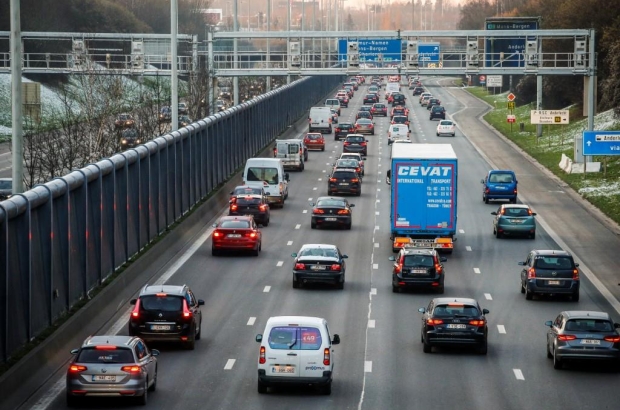- Daily & Weekly newsletters
- Buy & download The Bulletin
- Comment on our articles
Brussels congestion: less traffic in general, but worse rush hour
Traffic on the motorways around Brussels increased again in 2023 compared to the previous year, but was still below pre-pandemic levels, according to figures from the Flemish Traffic Centre.
Nevertheless, congestion in the evening rush hour has increased since 2019, Bruzz reports.
While traffic intensity across Flanders was lower in 2023 than in the pre-pandemic year of 2019, almost as many traffic jams were measured, including in the Brussels region. The evening rush hour has become heavier since 2019, a trend seen across Flanders.
The amount of time people lost sitting in traffic jams around Brussels during the morning rush hour rose to 27% of the total time spent in the car in 2023 - up from 23% in 2022.
The morning rush hour is much worse in the Brussels region than Antwerp (21% time lost) or Ghent (7%), according to these figures.
In the evening rush hour, the average percentage of lost time jumped from 18 to 22% in just one year. In 2019, lost time in the evening rush hour was 21%.
“According to the calculations, in 2023, the annual cost of congestion was equal to €5.058 billion, or 1.08% of GDP,” said Rodrigo Roja Morales, head of business analysis for Febiac, the Belgian and Luxembourg Automobile and Cycle Federation.
"The number calculated is within the expected range. The cost of congestion in a country normally costs up to 2% of GDP. In 2012, the European Commission estimated that the cost of congestion in Belgium was around 1% of GDP.”
The Flemish Traffic Centre published figures by road section, identifying the busiest motorway in Flanders as the Antwerp ring road, with the section from Berchem to Borgerhout being the worst stretch.
The Brussels ring road came in second for traffic volume, though only one road segment of the ring around Brussels made it into the top 10 busiest stretches of road on working days in 2023, namely the anti-clockwise ring road between the Wemmel and UZ Jette exits, where an average of 101,000 vehicles per working day drove.
Nearly all sections of the ring road around Brussels ranked in the top 40 busiest road segments.
Despite seeing a lower volume of traffic, the Brussels ring is more congested than that of Antwerp because it has fewer lanes – almost the same amount of traffic has to travel over fewer lanes.
Other busy stretches of the Brussels ring road included between Sint-Stevens-Woluwe and Zaventem with an average of 570 minutes of congestion on weekdays, the equivalent to 9.5 hours per working day.
Works had a major impact on traffic congestion, increasing the total hours of traffic jams per working day.
A driver who spends an hour in traffic jams effectively loses an hour of work or leisure time, leading to a drop in productivity due to stress and an increase in fuel consumption, as sudden acceleration and braking increase fuel consumption.
















